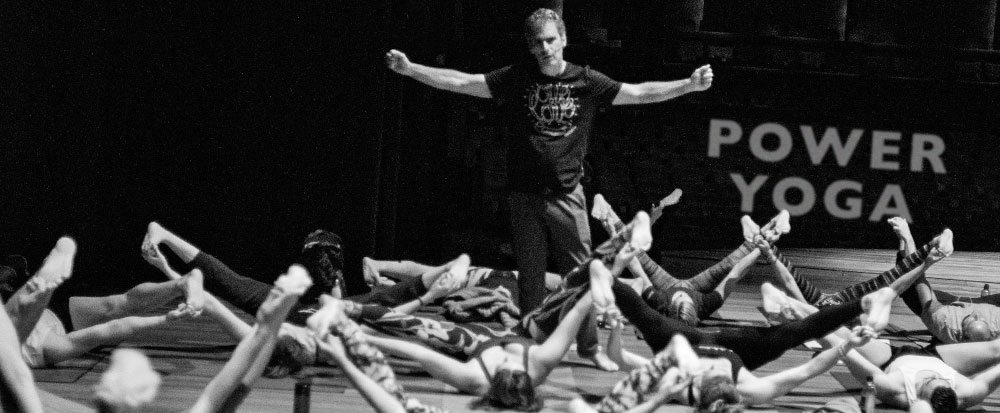Power Yoga history is very much tied to the history of modern yoga. Power Yoga, a name I coined but never trademarked (thus you have its generic use), is really one of the first types of yoga that stepped outside of the traditional yoga systems, even though its goal is the same as the traditional systems. I coined the term Power Yoga to simply describe an empowering yoga practice. This yoga origin history begins with Ashtanga yoga. I had the privilege to learn and study with David Williams (and Brad Ramsey), the first person to bring Ashtanga vinyasa yoga from India to the world, and eventually in India with David’s teacher and Ashtanga’s founder, K. Pattabhi Jois.
While Ashtanga yoga was a wonderful entry point for me into this yoga world and practice, its rigidity and dogma did not fit my body or mind. Almost immediately while in India, I began to naturally adapt it to fit my body, without me or Pattabhi even knowing. Within the dogmatic sequences of Ashtanga yoga, I started adding poses my body was asking for, all of this happening under Pattabhi’s watchful eye without him uttering any concern or disagreement. What was simply the addition of a pose here and there within Ashtanga’s elaborate and dynamic sequences eventually became tangents of mini-sequences within the Ashtanga sequence. Soon, performing Ashtanga’s full sequences (which was required) with the addition of the tangent sequences which were getting longer and were naturally evolving from my intuitive physical needs, became too time-consuming. These asana sessions were lasting over three hours. So, I had to make a choice between the generic sequence of K. Pattabhi Jois and the personal intuitive sequence emanating from within me.
Basically, the rest is history, as I chose to listen to my intuition. In a lot of ways, this is what Power Yoga is: freedom and discovery! This is what I meant when I coined the term Power Yoga, as what is more empowering than stepping out of the dogma and giving oneself permission and freedom to explore? I would like to mention meditation here as well, as I have found the physical yoga practice is very superficial and limited and that’s all K. Pattabhi Jois was teaching. Power Yoga integrates mindfulness meditation, turning the physical practice into a meditation in motion. Which is also very empowering!
Soon after returning from India, I changed the name of what I was teaching to Power Yoga (as you need a catchy name on the studio schedule), as it certainly was not an Ashtanga yoga sequence and did not have the rigid Ashtanga yoga mentality of all or nothing. The Ashtanga yoga community was up in arms that one of their own had shifted away and had the gall to create something new. There was a huge critical article written against Power Yoga in Yoga Journal magazine. But today, attitudes have softened, and even those most critical Ashtanga folks have changed and enhanced their own Ashtanga yoga practices with other forms of practice. Today you have so many styles of flowing yoga, all of which have their origin in Ashtanga vinyasa yoga. So a big shout out and thank-you to David Williams and K. Pattabhi Jois for getting all of us flowing!
aloha, Bryan
Want to learn more about Power Yoga and its benefits? Feel free to also check out my other article, “What Are the Benefits of Power Yoga” on our Power Yoga Blog.


1 thought on “The Origin and Development of Power Yoga”
Pingback: 【 POWER YOGA 】Supérate con la Energía del Vinyasa más intenso ◁◁